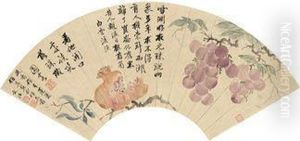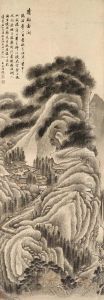Pan Gongshou Paintings
Pan Gongshou was a Chinese painter who lived during the Qing Dynasty, particularly known for his work in the literati painting tradition. Born in 1741, Pan Gongshou was active during the Qianlong period, a time marked by a great flourishing of arts and culture. He hailed from Zhejiang province, which was a vibrant center for cultural and artistic pursuits.
Pan Gongshou was skilled in painting landscapes, figures, flowers, and birds. His work is characterized by a combination of elegance and strength, exhibiting the refined tastes of the literati class of scholars, officials, and artists. As was typical for literati painters, he was also a poet and calligrapher, and his paintings often included poetic inscriptions and expressive calligraphy that complemented the visual elements of his work.
Despite his talents, there is relatively little biographical detail about Pan Gongshou's life compared to some of his contemporaries. This lack of detail is not uncommon for artists of the period who were not in the imperial court or did not become the subject of widespread acclaim during their lifetimes. However, his surviving works contribute to our understanding of the period's artistic styles and the personal expressions of literati painters.
Pan Gongshou's death in 1794 marked the end of his contributions to the world of Chinese literati painting. While he may not have been as widely known as some of his peers, his works remain a testament to the rich cultural tapestry of the Qing era and the individual talents that contributed to its legacy. Today, his paintings are studied for their aesthetic qualities and as historical documents that offer insight into the era's cultural and artistic norms.





